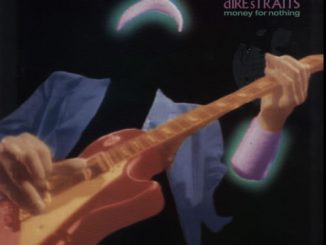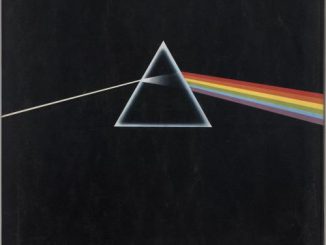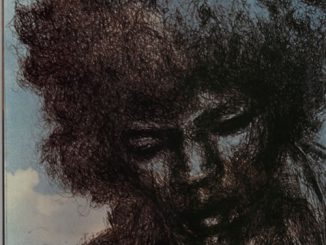As an in-house producer in the 1960s for New York’s Columbia Records, Bob Johnston came to prominence at a pivotal moment in popular music’s history. With his measured, balanced sound he enhanced the songs of several key performers, including Bob Dylan, Johnny Cash, Leonard Cohen and Simon and Garfunkel, and by so doing he assisted the transition from the pop singles market into the album-dominated rock music of the second half of the decade.
Johnston’s work was largely with Columbia’s artistic front-runners. He produced Dylan’s Highway 61 Revisited, the record that moved Dylan from folk performer to iconoclastic rock star (although Johnston was not involved with the innovative opener, “Like a Rolling Stone”). He then worked with him on more groundbreaking records: the even more revered Blonde on Blonde, John Wesley Harding, Nashville Skyline, and the lesser Self Portrait and New Morning.
The task of a staff producer entailed a wide overview of popular culture: just before Highway 61 Johnston produced “Hush Hush Sweet Charlotte”, a US Top 10 hit for the saccharine Patti Page, the previous decade’s biggest-selling female artist. The occupation also required humility. “My job wasn’t to be a hero and to tell Paul Simon or Bob Dylan or Johnny Cash or Willie Nelson what the fuck to do!” he said. “I thought if you want to be a hero or if you want to take credit, get some other people to work with. Don’t work with these people. I wasn’t like some other people who were looking to be the next Phil Spector.”
He was born into a distinguished musical family in Hillsboro, Texas. His grandmother co-wrote the standard “When Irish Eyes Are Smiling”, while his mother wrote songs for Gene Autry. He attempted to succeed as a rockabilly artist, with such tunes as “Born To Love One Woman”.
Then on a bill in Los Angeles, between Tommy Sands and Ricky Nelson, he had a minor epiphany: “As the female fans screamed, ‘We want Ricky! We want Ricky!’ I got about halfway through and had to quit. It was embarrassing. I looked like shit ’cause I didn’t have any money, and he looked like four million dollars. I thought, ‘This isn’t a good way to earn a living.’ So I started to write and produce, and forget about the recording end.”
First he wrote film soundtrack songs for Elvis Presley, shrewdly recording his demos with the Jordanaires, Presley’s backing group, boosting the odds of being chosen by The King. He then came to the attention of Columbia’s legendary John Hammond, who he described as “the greatest music man that ever lived, Mr CBS. He discovered all the blues people, all the jazz people, Dylan, Springsteen, Paul Simon and hundreds of others. He was my mentor all the way down the line. He was the one I would go to for help.”
When Johnston suggested that Dylan record in Nashville, he was threatened with the sack by Albert Grossman, the singer’s manager. Often contrary, Dylan – who Johnston revered as an unalloyed prophet – then decided in 1966 that the Tennessee country music capital was where he would like to make his next record, the double album Blonde on Blonde. He was seeking, he said, a guitar, organ and harmonica balance he could hear in his head: “That thin, that wild mercury sound… metallic and bright gold.”
Johnston worked long hours, with key Nashville players, and the intensity displayed on Highway 61 only increased in Tennessee. “He never did anything twice,” he said of Dylan. “It was like one time through; do another one; ‘listen to this’… He’d pick up a guitar; then he’d get on the piano; then he’d wind up his electric guitar and he’d be gone again.
“No one ever counted off for him. He’d start tapping his foot and everybody would be going and nobody had any fucking idea where he was going. I told everybody I ever came in contact with, ‘Just keep playing. Don’t stop. We can always overdub somebody else, but you can’t make him go back and do that song again.’”
The same year as Blonde on Blonde, Johnston produced a pair of albums for Simon and Garfunkel, Sounds of Silence and Parsley, Sage, Rosemary and Thyme. He made seven albums for Johnny Cash, including the 7m-selling Folsom and 9m-selling San Quentin prison sets, and seven LPs for Marty Robbins. For Leonard Cohen he helmed Songs From a Room, Songs of Love and Hate and Live Songs, as well as Dr Byrds & Mr Hyde for the Byrds.
In the 1970s, seeking more than a Columbia salary, Johnston set up his own production arm. Lindisfarne’s Fog on the Tyne, a UK No 1 album, was an early accomplishment. As time rolled on, however, he produced less frequently.
Part of what makes a great record producer is generating the most congenial ambience. In the documentary The Other Side of Nashville, Cash summed up working with him: “Bob Johnston is a producer that is an artist’s dream. Bob Johnston likes to sit back and watch an artist produce himself, and then he puts it together. Bob Johnston is smart enough to know when he gets an artist who believes in himself – to let him run with it.”
Donald William “Bob” Johnston, record producer, songwriter and performer: born Hillsboro, Texas 14 May 1932; married 1964 Joy Byers (three sons); died Nashville, Tennessee 14 August 2015.
By Chris Salewicz of the Independent





Be the first to comment